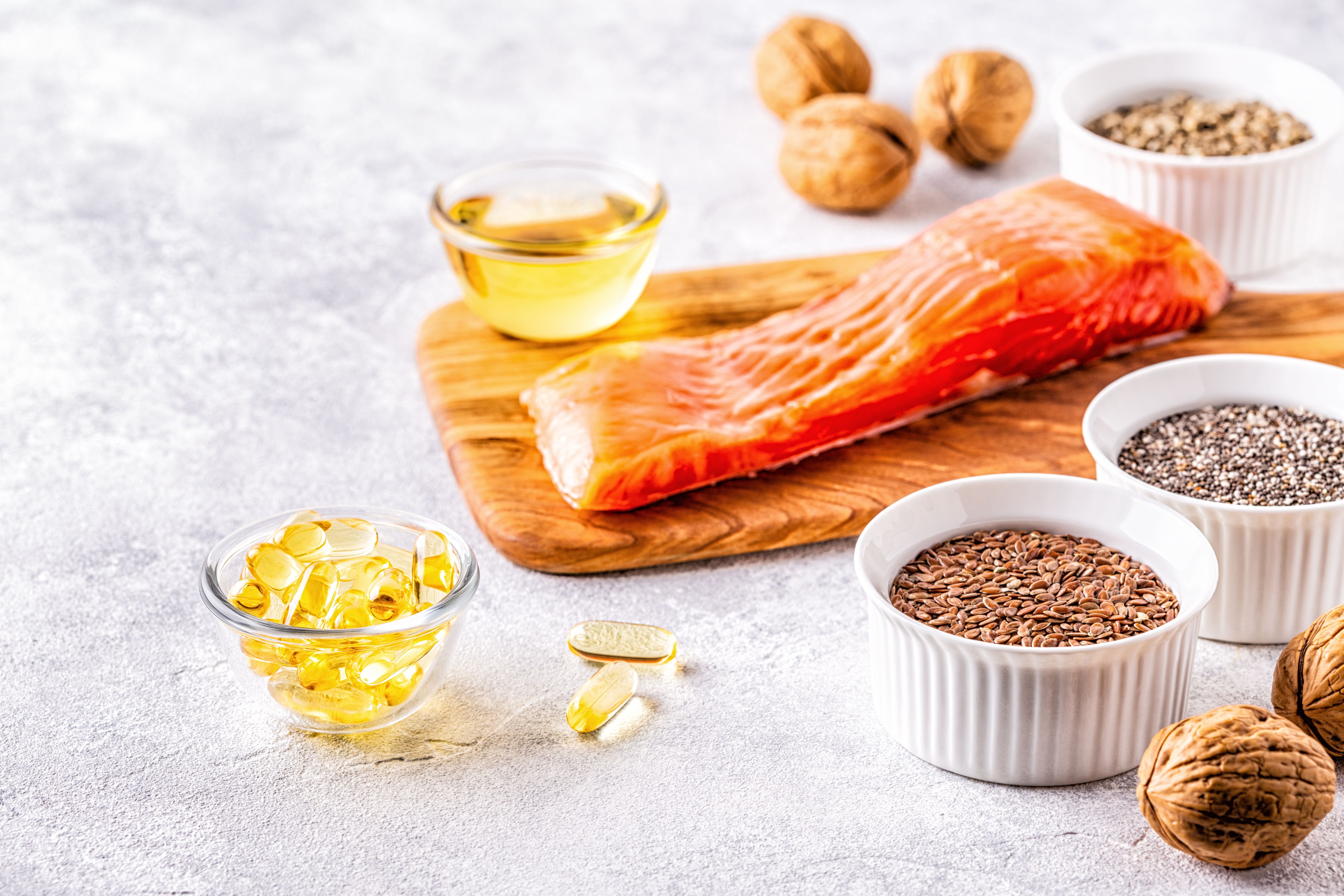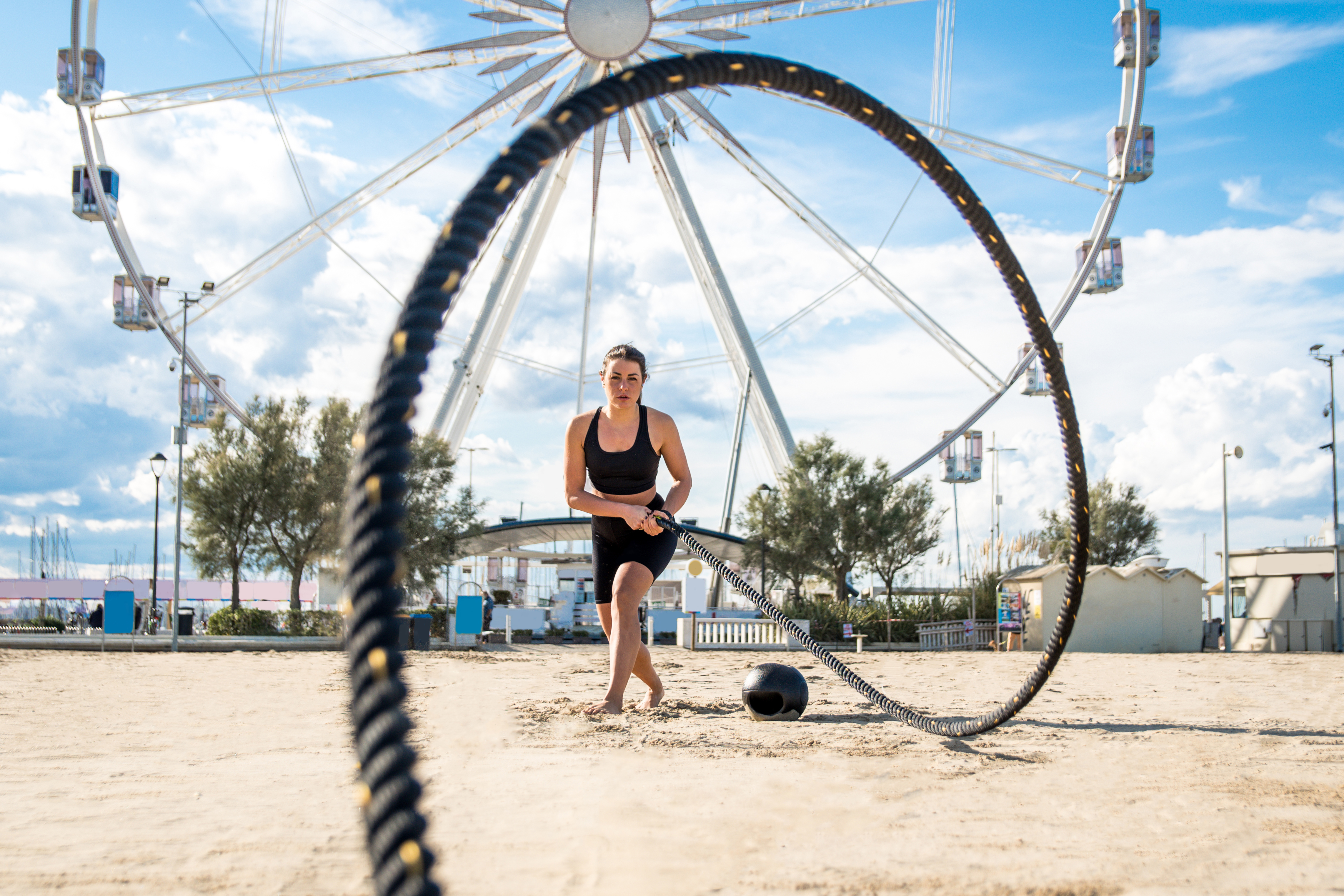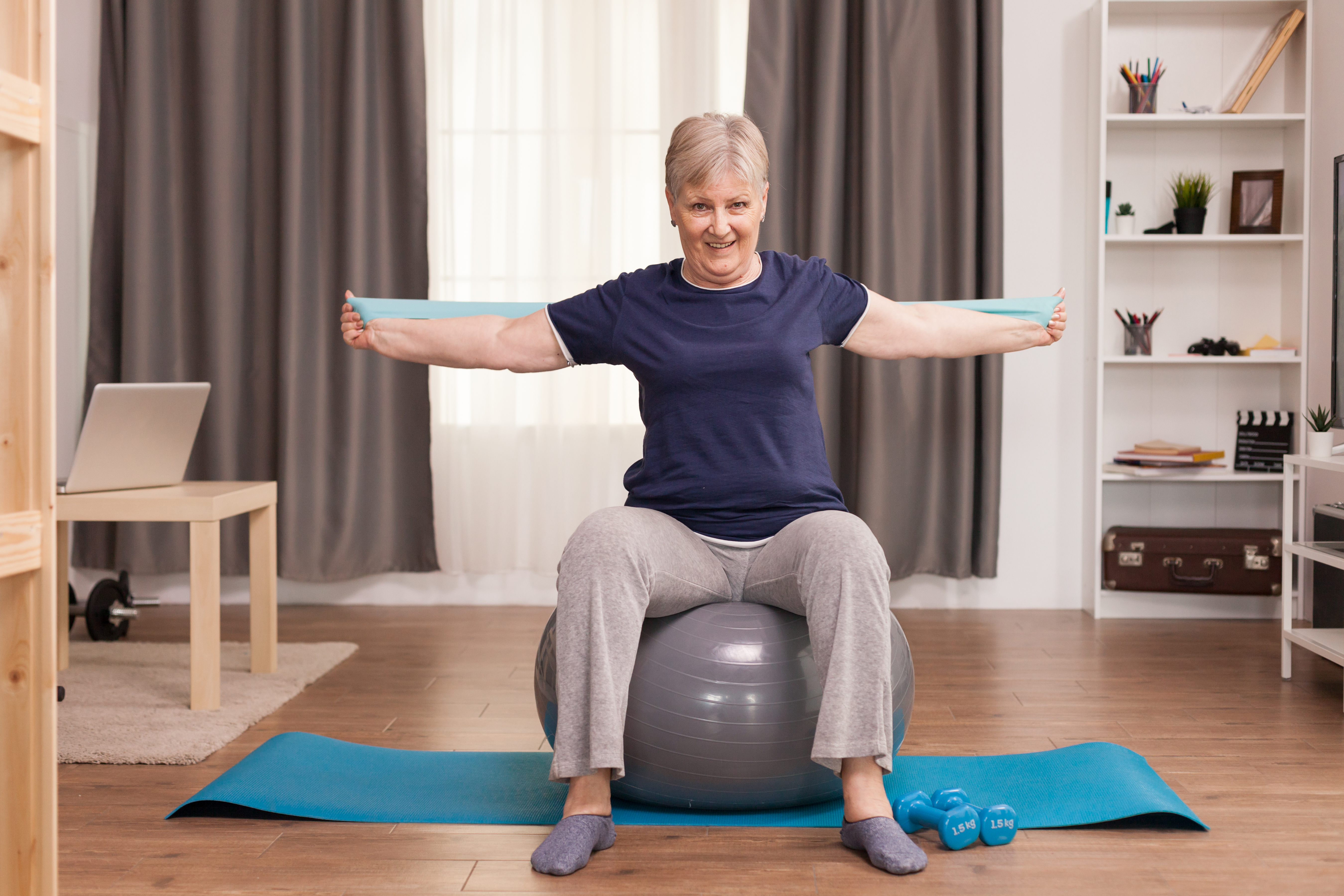Science-Backed Moves to Combat Age-Related Muscle Loss
Losing muscle as we age isn’t just about appearance—it’s about independence, balance, and staying strong enough to live life on your terms. Age-related muscle loss, or sarcopenia, starts quietly—often in your 40s—and accelerates with each passing decade, affecting everything from mobility to metabolism. Left unchecked, it can lead to frailty, falls, and a diminished quality of life. But here’s the empowering truth: you’re not powerless. Thanks to decades of research, we now know that muscle decline isn’t inevitable—it’s manageable, even reversible. With the right combination of movement, nutrition, and lifestyle shifts, you can preserve strength, regain stability, and defy the muscle myths of aging. In this guide, we’ve expanded our list of science-backed strategies to help you fight sarcopenia head-on. Whether you’re looking to maintain what you’ve built or rebuild what you’ve lost, these practical tools are your blueprint for staying strong—at every age.
1. The Role of Protein in Muscle Maintenance

Protein is a crucial nutrient for muscle maintenance, especially as we age. It serves as the building block for muscle repair and growth, making it essential for combating sarcopenia. Research indicates that older adults require more protein than younger individuals to stimulate muscle protein synthesis effectively. This is due to anabolic resistance, a reduced sensitivity to protein intake that occurs with aging. Therefore, increasing dietary protein can help mitigate muscle loss. High-quality protein sources, such as lean meats, fish, eggs, and dairy, provide essential amino acids that support muscle health. Plant-based proteins, like beans, lentils, and tofu, can also contribute to a balanced diet. Timing protein intake around physical activity can further enhance muscle protein synthesis. Consuming protein-rich meals throughout the day ensures a steady supply of amino acids to the muscles, promoting growth and repair. By prioritizing protein in the diet, older adults can preserve muscle mass and function, ultimately improving their quality of life.
2. Strength Training: Building and Preserving Muscle

Strength training is one of the most effective strategies for combating age-related muscle loss. It involves exercises that target major muscle groups, using resistance to stimulate muscle growth and strength. Studies show that regular strength training can increase muscle mass, improve bone density, and enhance metabolic health in older adults. This form of exercise counteracts the natural decline in muscle mass by promoting hypertrophy, the enlargement of muscle fibers. Strength training can be adapted to suit various fitness levels, making it accessible to everyone. Beginners can start with bodyweight exercises, such as squats and push-ups, gradually progressing to resistance bands or weights. Consistency is key, with recommendations suggesting at least two sessions per week for optimal results. Proper form and technique are crucial to prevent injury and maximize benefits. By incorporating strength training into a regular fitness routine, individuals can maintain muscle strength, enhance mobility, and reduce the risk of falls and fractures.
3. The Importance of Vitamin D for Muscle Health

Vitamin D plays a vital role in muscle health, influencing muscle function and strength. It helps regulate calcium absorption, essential for bone health, which in turn supports muscle function. Deficiency in vitamin D is common among older adults and is associated with muscle weakness and increased risk of falls. Studies have shown that adequate levels of vitamin D can improve muscle strength and reduce the risk of sarcopenia. Sun exposure is a primary source of vitamin D, but factors like geographic location, skin pigmentation, and age can affect synthesis. Dietary sources, such as fatty fish, fortified foods, and supplements, can help maintain adequate levels. Regular monitoring of vitamin D status and consulting with healthcare providers for appropriate supplementation is recommended. By ensuring sufficient vitamin D intake, individuals can support muscle health, enhance physical performance, and reduce the risk of age-related muscle loss.
4. Omega-3 Fatty Acids: Enhancing Muscle Protein Synthesis

Omega-3 fatty acids, found in fish oil and certain plant oils, have been shown to enhance muscle protein synthesis and improve muscle function in older adults. These essential fats possess anti-inflammatory properties that can counteract the chronic inflammation associated with aging, which contributes to muscle breakdown. Research suggests that omega-3 supplementation can increase muscle mass and strength, particularly when combined with resistance training. Fatty fish, such as salmon, mackerel, and sardines, are excellent dietary sources of omega-3s. Plant-based options include flaxseeds, chia seeds, and walnuts. Incorporating these foods into the diet can provide the necessary omega-3s to support muscle health. Supplements are also available for those who may not consume enough through diet alone. By boosting omega-3 intake, individuals can enhance muscle protein synthesis, reduce inflammation, and promote overall muscle health, effectively countering age-related muscle loss.
5. The Benefits of High-Intensity Interval Training (HIIT)

High-Intensity Interval Training (HIIT) is a time-efficient exercise strategy that can significantly impact muscle health. HIIT involves short bursts of intense activity followed by brief recovery periods, promoting cardiovascular fitness and muscle endurance. Studies indicate that HIIT can improve muscle oxidative capacity, enhance insulin sensitivity, and increase muscle mass in older adults. This form of exercise can be adapted to various fitness levels, making it accessible to a wide range of individuals. Activities such as cycling, walking, or swimming can be performed in intervals, allowing for customization based on personal preferences and abilities. HIIT sessions are typically shorter than traditional workouts, making them appealing for those with time constraints. Safety and proper technique are crucial to prevent injury, especially for beginners. By incorporating HIIT into a regular exercise routine, individuals can boost muscle health, improve cardiovascular fitness, and combat age-related muscle loss effectively.
6. Adequate Sleep: A Pillar of Muscle Recovery

Adequate sleep is essential for muscle recovery and overall health, playing a crucial role in combating age-related muscle loss. During sleep, the body undergoes various restorative processes, including muscle repair and growth. Growth hormone, which promotes muscle protein synthesis, is released during deep sleep stages. Chronic sleep deprivation can impair these processes, leading to decreased muscle mass and strength. Older adults often experience changes in sleep patterns, making it essential to prioritize quality sleep. Establishing a regular sleep schedule, creating a comfortable sleep environment, and practicing relaxation techniques can enhance sleep quality. Avoiding stimulants, such as caffeine and electronics before bedtime, can also promote better sleep. By ensuring adequate rest, individuals can support muscle recovery, enhance physical performance, and reduce the risk of sarcopenia, ultimately improving their quality of life.
7. Hydration: Supporting Muscle Function

Hydration is a key factor in maintaining muscle function and preventing age-related muscle loss. Water is essential for various physiological processes, including nutrient transport, temperature regulation, and joint lubrication. Dehydration can impair muscle function, leading to fatigue, cramps, and decreased performance. Older adults are at a higher risk of dehydration due to physiological changes and a reduced sense of thirst. Ensuring adequate fluid intake is crucial for preserving muscle health. Drinking water throughout the day, consuming hydrating foods like fruits and vegetables, and monitoring urine color can help maintain hydration levels. Electrolyte-rich beverages may be beneficial during intense physical activity or in hot climates. By prioritizing hydration, individuals can support muscle function, enhance exercise performance, and reduce the risk of age-related muscle loss, ultimately promoting overall well-being.
8. The Impact of Stress Management on Muscle Health

Stress management is an often-overlooked aspect of muscle health, yet it plays a significant role in preventing age-related muscle loss. Chronic stress triggers the release of cortisol, a hormone that can lead to muscle breakdown and inhibit muscle growth. Prolonged exposure to high cortisol levels can contribute to sarcopenia and other health issues. Implementing stress-reduction techniques can mitigate these effects and support muscle health. Practices such as mindfulness meditation, deep breathing exercises, and yoga have been shown to reduce stress and improve overall well-being. Regular physical activity is also an effective stress reliever, promoting the release of endorphins, which enhance mood and reduce anxiety. By managing stress effectively, individuals can protect muscle mass, enhance physical performance, and improve their quality of life, ultimately defying age-related muscle loss.
9. The Significance of Hormonal Balance

Hormonal balance plays a crucial role in maintaining muscle mass and function, particularly as we age. Hormones such as testosterone, estrogen, and growth hormone regulate muscle protein synthesis and influence muscle strength. Age-related hormonal changes can contribute to sarcopenia, making it essential to address hormonal imbalances. Regular physical activity, particularly strength training, can boost hormone levels and enhance muscle health. Nutritional interventions, such as adequate protein intake and omega-3 supplementation, can also support hormonal balance. In some cases, hormone replacement therapy may be considered under medical supervision. By prioritizing hormonal health, individuals can preserve muscle mass, improve physical performance, and reduce the risk of age-related muscle loss, ultimately enhancing their quality of life.
10. The Role of Antioxidants in Muscle Preservation

Antioxidants play a vital role in muscle preservation by neutralizing free radicals and reducing oxidative stress, which can contribute to muscle breakdown. Aging is associated with increased oxidative stress, leading to cellular damage and inflammation. Consuming a diet rich in antioxidants can help combat these effects and support muscle health. Foods high in antioxidants, such as berries, leafy greens, nuts, and seeds, provide essential nutrients that protect muscle cells. Vitamins C and E, as well as compounds like polyphenols and flavonoids, have been shown to enhance muscle function and reduce inflammation. By incorporating antioxidant-rich foods into the diet, individuals can support muscle preservation, enhance recovery, and reduce the risk of age-related muscle loss, ultimately promoting overall well-being.
11. The Impact of Carbohydrate Timing on Muscle Health

Carbohydrate timing can significantly impact muscle health, particularly in the context of exercise and recovery. Carbohydrates are the primary energy source for physical activity, providing fuel for muscle contractions. Consuming carbohydrates before and after exercise can enhance performance and support muscle recovery. Pre-exercise carbohydrates ensure adequate glycogen stores, while post-exercise carbohydrates replenish these stores and promote muscle protein synthesis. The combination of carbohydrates with protein after exercise has been shown to enhance recovery and muscle growth. Whole grains, fruits, and starchy vegetables are excellent sources of carbohydrates that can be incorporated into a balanced diet. By optimizing carbohydrate timing, individuals can support muscle health, enhance exercise performance, and reduce the risk of age-related muscle loss, ultimately promoting overall well-being.
12. The Benefits of Flexibility and Balance Training

Flexibility and balance training are essential components of a comprehensive approach to combating age-related muscle loss. These forms of exercise enhance mobility, reduce the risk of falls, and improve overall physical function. Flexibility exercises, such as stretching and yoga, increase the range of motion and promote joint health. Balance training, including activities like tai chi and Pilates, improves stability and coordination. Incorporating these exercises into a regular fitness routine can enhance muscle function and reduce the risk of injury. Older adults can benefit from improved posture, increased mobility, and greater independence through flexibility and balance training. By prioritizing these forms of exercise, individuals can support muscle health, enhance physical performance, and reduce the risk of age-related muscle loss, ultimately promoting overall well-being.
13. The Role of Creatine Supplementation in Muscle Preservation

Creatine supplementation has gained attention for its potential role in preserving muscle mass and function in older adults. Creatine is a naturally occurring compound that provides energy for muscle contractions, particularly during high-intensity exercise. Research suggests that creatine supplementation can enhance muscle strength, increase lean body mass, and improve exercise performance. It may also support cognitive function and reduce fatigue. Creatine is commonly found in meat and fish, but supplementation can provide a more concentrated dose. While generally considered safe, it is essential to consult with healthcare providers before starting supplementation, especially for those with kidney issues. By incorporating creatine supplementation into a comprehensive approach to muscle health, individuals can enhance physical performance, preserve muscle mass, and reduce the risk of age-related muscle loss, ultimately promoting overall well-being.
14. Social Engagement: Its Influence on Physical Health

Social engagement plays a significant role in maintaining physical health and combating age-related muscle loss. Social interactions provide emotional support, reduce stress, and encourage physical activity. Engaging in group exercises, sports, or community activities can enhance motivation and adherence to fitness routines. Social connections also promote mental health, reducing the risk of depression and anxiety, which can negatively impact physical health. Older adults can benefit from joining clubs, participating in group classes, or volunteering, fostering a sense of belonging and purpose. By prioritizing social engagement, individuals can support muscle health, enhance overall well-being, and reduce the risk of age-related muscle loss, ultimately promoting a more active, fulfilling lifestyle.
15. Collagen Support for Muscle Integrity

Collagen isn’t just for skin—it’s a key structural protein in muscles, tendons, and ligaments. As we age, collagen production declines, weakening the connective tissue that supports muscle strength and mobility. Supplementing with collagen peptides, particularly hydrolyzed forms combined with vitamin C, has been shown to improve muscle repair and joint function. It’s especially beneficial for those recovering from injury or aiming to maintain workout consistency. Bone broth, gelatin, and collagen powders can easily be added to meals or smoothies. Supporting collagen production helps reinforce muscle integrity from the inside out, reducing the risk of injury and promoting functional strength.
16. Neuromuscular Activation Exercises

Age-related muscle loss isn’t just about mass—it’s also about connection. The brain-muscle link weakens with age, reducing coordination, strength, and stability. Neuromuscular activation exercises—like controlled foot drills, isometric holds, and slow, mindful movement—help retrain these pathways. Think of it as muscle re-education: teaching your body to “fire” more effectively. These exercises improve balance, prevent falls, and maximize output from existing muscle fibers. Incorporate them into warm-ups or low-impact days to reinforce coordination. It’s not always about lifting heavier—it’s about getting your body to use what it already has, smarter and sharper.
17. Periodization: Smarter Training Over Time

As we age, how we train matters as much as how much we train. Periodization—a strategy that cycles through phases of intensity, volume, and recovery—can help prevent overtraining and stimulate consistent muscle adaptation. For older adults, this means alternating between strength-building weeks and deload or endurance-focused phases to give joints and nervous systems time to recover. Research supports periodized training for improving long-term strength and reducing injury risk. It also keeps workouts fresh and mentally engaging. Whether you're lifting weights or doing bodyweight circuits, rotating goals across weeks or months can maximize gains while respecting the body’s changing needs.
18. Blood Flow Restriction (BFR) Training

BFR training uses light bands to restrict blood flow to working muscles during low-intensity exercises, triggering hypertrophy responses similar to high-load lifting. Studies show it can increase strength and muscle mass in older adults using lighter weights, making it ideal for those with joint limitations or recovering from injury. BFR stimulates growth hormone release and muscular endurance while reducing mechanical stress on joints. It's best learned under professional guidance, but once mastered, it can be a powerful tool for older adults looking to maintain or rebuild muscle with minimal wear and tear. A cutting-edge strategy grounded in well-documented science.
19. Gut Health: The Microbiome–Muscle Connection

Emerging research links gut health directly to muscle preservation, especially in older adults. A diverse gut microbiome helps regulate inflammation, absorb protein efficiently, and produce short-chain fatty acids—compounds that protect against muscle breakdown. Dysbiosis (microbial imbalance) can interfere with nutrient uptake and drive low-grade inflammation, accelerating sarcopenia. Probiotic-rich foods like yogurt, kefir, and fermented vegetables, along with prebiotic fiber from garlic, onions, and oats, can nourish a healthier microbiome. A strong gut supports better digestion, immunity, and—surprisingly—muscle retention. Prioritizing gut health adds a new, often-overlooked dimension to your anti-sarcopenia game plan.
20. Blood Flow and Nitric Oxide Boosting

Effective blood flow is crucial for delivering the oxygen and nutrients needed for muscle repair and growth. As we age, vascular health can decline, a process exacerbated by chronic inflammation. Boosting nitric oxide (NO) production can help. NO is a molecule that relaxes and widens blood vessels, improving circulation. Dietary strategies, such as consuming foods rich in nitrates (beets, leafy greens) and L-citrulline (watermelon), can naturally increase NO levels. Incorporating light cardiovascular exercise can also enhance vascular health. This focus on microcirculation ensures your muscles are well-fed, improving their ability to recover and grow.
21. Eccentric Training: The Power of the Negative

Most people focus on the lifting phase of an exercise (concentric), but the lowering phase (eccentric) is where much of the muscle-building magic happens. Eccentric training involves performing the negative, or lowering, portion of a movement slowly and with control. For example, slowly lowering your body during a squat or slowly extending your arm during a biceps curl. Research shows eccentric-focused training can produce greater muscle hypertrophy and strength gains in older adults, while also improving tendon health and reducing injury risk. It's an often-overlooked, yet highly effective, strategy for defying sarcopenia.
22. Cold and Heat Therapy for Recovery

Strategic exposure to hot and cold temperatures can be a powerful tool for muscle recovery and preservation. Cold therapy, such as ice packs or cold showers, helps reduce inflammation and soreness post-workout. Heat therapy, like saunas or hot baths, improves circulation and promotes muscle relaxation, which is beneficial for mobility and joint health. Alternating between hot and cold (contrast therapy) has been shown to be particularly effective for flushing out metabolic waste and enhancing recovery. Integrating these therapeutic methods into your routine can help your muscles rebound faster and keep you consistently active without overtraining.
23. Blood Glucose and Insulin Sensitivity

High blood glucose and poor insulin sensitivity can accelerate age-related muscle loss. Insulin is a powerful anabolic hormone that helps drive nutrients, including amino acids, into muscle cells for growth and repair. When insulin resistance is present, this process is impaired, leading to a state of "anabolic resistance" where muscle protein synthesis is reduced. Managing blood sugar through a balanced diet low in refined carbohydrates, regular exercise, and adequate sleep is crucial. This helps maintain healthy insulin sensitivity, ensuring your muscles can effectively absorb the nutrients they need to stay strong.
24. The Importance of "Unloaded" Movement

While strength training is key, consistent "unloaded" movement—exercising without resistance—is equally vital for fighting sarcopenia. Activities like walking, Tai Chi, or balance drills reinforce crucial neural pathways, improving proprioception (your sense of body position) and coordination. These movements improve the efficiency of your neuromuscular connection, helping you use your muscles more effectively and preventing falls. The combination of loaded training (strength) and unloaded training (flexibility, balance) creates a holistic, resilient body that is not only strong but also agile and stable.
Strong at Every Age

Muscle loss with age isn’t a sentence—it’s a signal. A reminder that strength, mobility, and vitality don’t disappear overnight—they fade quietly, unless you fight back with intention. These science-backed strategies prove that preserving muscle isn’t just possible—it’s powerful. From strength training and protein timing to gut health and neuromuscular rewiring, the tools are here. The goal isn’t to chase youth—it’s to build resilience, stability, and freedom on your own terms. Whether you’re in your 40s, 60s, or beyond, your muscles are still listening. What you do today shapes what you can do tomorrow—walk farther, lift easier, live fully. So don’t settle for decline. Choose movement. Choose nourishment. Choose recovery. Because the future isn’t defined by the calendar—it’s defined by the choices you make now. And strength? It’s not just about muscle. It’s about showing up—for every year still to come.
